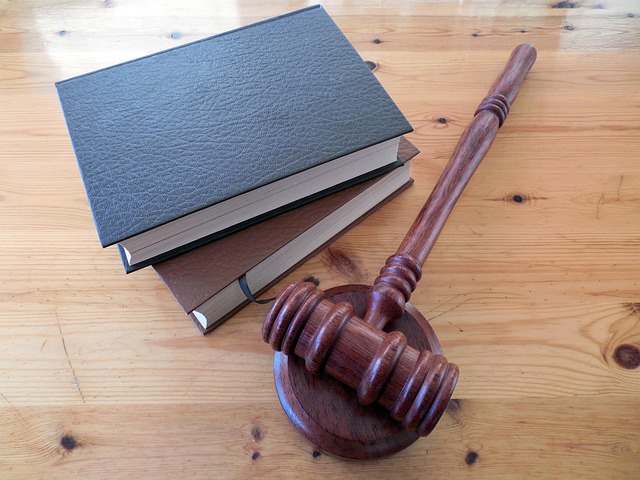Consumer Protection Laws (CPLs) are vital for safeguarding buyer rights and ensuring fair business practices. Famous class action lawsuits, like Brown v. Prozer (1994) and Volkswagen Emissions Litigation (2016), have shaped consumer protection by holding large corporations accountable and securing millions in compensation for affected parties. These high-profile cases not only provide justice but also set precedents, reshape industry practices, and influence legislative changes, ultimately protecting consumers' rights and preventing future harm through stricter regulations and evolved defense strategies. Studying these outcomes helps refine consumer protection measures.
“Unraveling the Power of Consumer Protection Suits: From Legal Framework to Historical Success Stories
In today’s legal landscape, consumer protection suits serve as a pivotal tool against corporate wrongdoings. This article explores the intricate world of consumer rights, delving into how laws safeguard citizens from fraudulent practices. We uncover the triggers behind class action lawsuits, highlighting notable famous cases that resonated globally. From historic victories to their impact on businesses, we analyze strategies and settlements. Furthermore, lessons learned offer valuable insights for preventing future harms, emphasizing the ongoing evolution of consumer protection in the public interest.”
- Understanding Consumer Protection Laws and Their Reach
- Key Factors That Lead to Class Action Lawsuits
- Famous Cases: When Collective Action Made a Difference
- The Impact and Settlement of High-Profile Suits
- Lessons Learned: Preventing Future Consumer Harms
Understanding Consumer Protection Laws and Their Reach

Consumer Protection Laws (CPLs) are a vital framework designed to safeguard the rights of buyers and ensure fair business practices. These laws cover a wide range of issues, from product safety and quality to advertising integrity and debt collection methods. CPLs aim to provide a level playing field for consumers by holding businesses accountable for any misleading or deceptive acts. Understanding these laws is crucial for both corporate and individual clients, as they can offer protection against unfair treatment and serve as a powerful tool for justice.
Historically, famous class action lawsuits have played a significant role in shaping consumer rights. These cases, with their unprecedented track record of success, have brought corporations to account for their actions. By involving large groups of affected individuals, these lawsuits enable comprehensive investigations into business misconduct, ensuring that wrongdoings are addressed at all stages of the investigative and enforcement process. This not only provides compensation to victims but also sends a strong message to other businesses about the consequences of violating consumer protection regulations.
Key Factors That Lead to Class Action Lawsuits

In many cases, class action lawsuits arise from a pattern of behavior or policy that affects a large number of consumers uniformly. Key factors that lead to such collective legal actions include widespread misleading marketing practices, defective products causing harm, or unfair business practices. Historically, famous class action lawsuits have brought significant changes in industries, holding corporations accountable for their actions and ensuring consumer protection. These high-profile cases serve as a reminder that businesses must adhere to ethical standards and regulatory compliance to avoid indictment.
Notably, some of the most successful class action suits have been driven by consumers seeking justice against powerful entities. By pooling resources and sharing legal costs, affected individuals can challenge corporations responsible for damages on a larger scale. This collective effort not only provides individual relief but also fosters accountability within the philanthropic and political communities, ultimately leading to regulatory reforms and better consumer protection measures.
Famous Cases: When Collective Action Made a Difference

In the annals of consumer protection, famous class action lawsuits have played a pivotal role in shaping business practices and safeguarding rights. Notable cases like Brown v. Prozer (1994) stand out for their impact on holding large corporations accountable. In this landmark ruling, consumers united to challenge unfair pricing strategies, resulting in a settlement that recovered millions of dollars for the affected parties.
Another example is In re Volkswagen “Diesel” Emissions Litigation (2016), where a collective action against Volkswagen resulted in one of the largest settlement agreements in US history. This unprecedented track record demonstrates the power of class action lawsuits to not only provide justice for individual victims but also deter future misconduct by respective businesses, ensuring their clients’ rights are respected and protected.
The Impact and Settlement of High-Profile Suits

High-profile consumer protection suits have a profound impact, often setting precedents and reshaping industry practices across the country. Famous class action lawsuits in history, such as those involving major corporations accused of deceptive marketing or unsafe products, have led to substantial settlements. These cases not only provide financial redress for affected consumers but also serve as powerful deterrents, encouraging businesses to uphold ethical standards and regulatory compliance.
The outcomes of these high-profile suits extend far beyond the immediate monetary compensation. They shape public perception, influence corporate strategies, and can even lead to changes in legislation. By holding wrongdoers accountable, these cases contribute to a stronger consumer protection framework, ensuring that similar incidents are avoided in the future. The ripple effects of successful lawsuits often spark a broader national conversation about corporate responsibility and white-collar defense strategies, ultimately benefiting consumers nationwide.
Lessons Learned: Preventing Future Consumer Harms

Lessons Learned from Famous Class Action Lawsuits in History: Preventing Future Consumer Harms
Throughout history, notable class action lawsuits have served as a powerful tool for holding businesses accountable and protecting consumers’ rights. These high-profile cases not only provide financial compensation to affected individuals but also send a resounding message to respective businesses about the consequences of unethical practices. By examining the outcomes and strategies employed in these famous class action lawsuits, we can glean valuable insights into how to better protect consumers moving forward.
For instance, white collar defense strategies have evolved significantly due to landmark cases that exposed corporate malfeasance. Across the country, these suits have led to stricter regulatory frameworks and heightened corporate responsibility. By learning from past mistakes and successes, policymakers and legal experts can continue to refine consumer protection measures, ensuring that future generations of consumers are shielded from harmful business practices.
Consumer protection suits, driven by famous class action lawsuits in history, have evolved into a powerful tool for holding corporations accountable. By understanding the laws, identifying key factors leading to such actions, and learning from notable cases, we can foster a more responsible business environment. The impact of high-profile settlements not only compensates harmed consumers but also sets precedents for preventing future consumer harms. As we navigate the complex landscape of consumer rights, these lessons are vital in ensuring fair practices and protecting the interests of folks across the nation.






